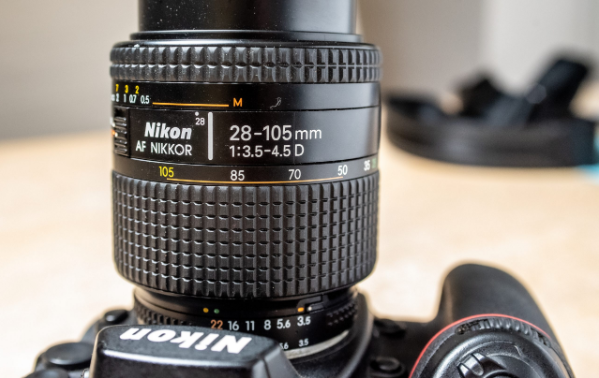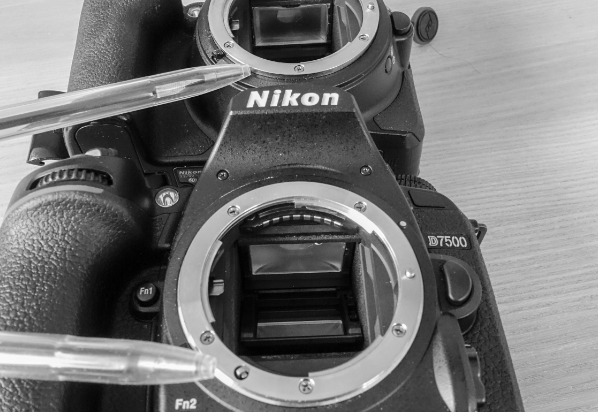Introduction
The Nikon Nikkor 28-105 f/3.5-4.5 AF-D was produced between 1998 and 2006, so obviously it is not in production anymore and hence you have to buy a used copy should this review give you the appetite for buying a copy. The lens is probably one of the underrated or forgotten lenses in the Nikkor vintage lineup in my humble opinion, and the fact that I recently bought my copy for 95 USD + import taxes (15% or thereabout) makes it an absolute steal. If you on top of that add that the lens with the zoom range from 28 to 105 is very versatile, it gets good reviews from most owners and those who have it report that it sits on their camera more than 80% of the time, then you have a gem of a lens that anyone with a Nikon camera body with the built in AF motor should consider as one of their first lenses.

What other users and reviewers report
Before I buy any lens, I always – after confirming it is within the reach of my budget – look to what owners of this lens report plus what reviews the lens has received. This lens does not have many reviews, but there are many users who have shared their view on this lens and the essence of all that is as follows.
First of all, the image quality is reported to be sharp throughout the range, the color rendition is great, the distortion is low and well controlled and the lens has a decent macro mode. Unfortunately the lens comes with a dramatic CA that reveals itself in high contrast situation, it is not the not the fastest lens (3.5-4.5), the flare control is poor as with so many vintage lenses and the there is some vignetting, but nothing that cannot be corrected in post.
When it comes to usability, the relative lightweight (0.5 kg) of this lens makes easy to carry around, the focal range is surprisingly useful (28-105) and it is simply a great walk around or vacation lens. What impairs the usability is a slow AF due to gearing in focus mechanism, a rotating front lens when zooming (annoying when using filters), a slim manual focus ring with short throw which makes manual focus more difficult. The lens body, as expected when you are dealing with a 15-20 year old lens is not weather sealed nor is it vibration reduced.
The quality is reported to be really good, and the fact that the lens is “Made in Japan” is always a good sign. The lens is a good blend of metal & plastic which both keeps weight down and makes the lens sufficiently rugged to take some heavy usage. Unfortunately the sample variation is quite significant and the mechanical quality not up to the optical quality (zoom). Especially the latter part I can confirm when I unboxed my copy: the zoom does not feel premium at all, quite on the contrary.
Focal range coverage
So the lens has fairly good reviews although far from perfect, but no lens is perfect, and if it is close, then the price is typically through the roof. So the next thing to check before purchase is if the lens matches well into your lineup of lenses or plan for the same.
The traditional way of building a versatile lineup of zoom lenses is via the so called holy trinity, where the lenses cover the extreme wide, standard zoom and long zoom as depicted below:

The lens with the range from 28-105 is a bit of an oddity as it is too long in both ends to act as the standard zoom, and as such you may want to disregard this lens for that reason alone. However, I have found that this lens is surprisingly versatile – the 28 is wide enough for most landscape uses, and although the zoom to 105 is not as long as you could wish for, I have been surprised how little I miss extra zoom then using this as my walk about / vacation lens. And in between you find both your nifty-fifty covered along with your classic portrait 85mm.
How to build your lens lineup is of course entirely up to you, but if you are willing to accept that this lens does not cover one of the 3 classic roles in the holy trinity, I think its versatility will surprise you positively.
My review
So after consulting other users and reviewers feedback, I decided that even through the 28-105 does not fit very well into my almost-all-primes approach to my lens collection, I decided to buy the 28-105. I figured the price was so low that the risk is relatively limited (I can sell the copy if I don’t like it) and because I hoped the focal range could cover a few primes when on vacation or out and about.
I have only been using this lens on full frame cameras (D700 and D750), so I cannot really comment on the performance on cropped sensors (DX, APS-C).
After a few months of shooting my review in short is: This is an amazing lens when you consider the price point. The value for money is through the roof in my opinion.
Do I recommend this lens? Yes, absolutely. But you have to make sure that you get a good copy. I will revert to that point a bit later.

I have primarily been using the lens on my D700, and like many other users reported, the lens has been on my D700 most of the time. It is surprisingly versatile. The 28mm may not be wide enough for a landscape scene, but as can be seen in the above example, it certainly can be made to work, and you can always slap a shorter prime in your camera bag to cover the full spectrum. In the zoom range you also cover the nifty-fifty and the classic 85mm portrait lens up to 105 mm that of course should be longer in the best of worlds, but I am surprised how seldom I miss additional zoom. So the versatility of this lens is surprisingly good in my opinion.

The lens is not the fastest, and aperture varies with focal length, but as long as you do not shoot in low light conditions, I doubt you will miss any speed in this lens. However, my more technical test of this lens at varying apertures point to a bit of softness when shooting wide open, but the lens quickly gets sharp when you stop down the aperture a bit. You can see my test of the lens at different apertures here.

One area where this lens is performing really bad is in some high contrast situations where the chromatic aberration (CA) gets crazy high! See the example below where there is a blue line next to the tree trunk in the middle of the picture:
Normally you can fix this in Lightroom (LR) by pressing “enable profile corrections” and/or “remove chromatic aberration”, but in this case LR could not fix it. Nor could the raw editor in Photoshop. I had to download the Capture NX-D software from Nikon in order to solve the problem. But then it was gone. And I have to underline that it is seldom I see this problem and even more seldom it is as bad as the example above. And if you are willing to extend your workflow in those rare cases and use the Capture NX-D software, then the problem can be solved.
Some say that the CA is worse with some copies of this lens than others, and that it could be subject to how rough a life the lens has led. I am not entirely sure of this, as my copy had almost no signs of usage when I got it from Japan – it looked like it has been lying in a drawer just waiting for me to buy it. I think it is more related to the lens being a zoom lens where the glass construction is more complicated than primes and hence there is always a risk that CA is there.
I normally refrain from giving my view on a lens’ color rendition, as this is very subjective and difficult to test. I am however a big fan of the Nikkor color rendition and this lens is no different – it is simply brilliant. But as I say, I cannot prove it, it is a matter of personal preference.
The lens has a bit of vignetting and also there is a bit of distortion, but as far as I can tell, LR does a good job of correcting these issues in post processing. There is a dedicated profile in LR for this lens, and hence I consider this issue solved or non existing, even if you are an architecture photographer where a straight line needs to be straight!
Finally the build quality is really good. The lens is not too heavy, and still there is a lot of metal in the “Made in Japan” construction. The only thing that disappointed me when I unboxed it was the feel of the zoom. It is not a very convincing part of the lens. It feels a bit wobbly, but works fine. I guess they had to save money somewhere back in the day. And after using the lens for some time, I hardly ever crosses my mind.

So this concludes my review. I think that my observations are much in line with the reviews and user comments that I referenced in the beginning. My addition is that CA sometimes is an issue and that I enjoy the macro mode more than most. But I re-iterate that the value of this good lens is through the roof and that I cannot recommend this lens enough as a good first lens for anyone with a full frame Nikon camera body. This brings me to some buying advice.
Before you go and buy your copy of this lens
First of all, before you consider this lens, go check that you have an autofocus motor built into your camera body:

Above you can see that the Nikon D7500 has the AF motor built in whereas the D5600 on top does not. In general the 3000 and 5000 Nikon camera bodies does not have the AF motor built into the body, and hence you are left with a manual focus lens. Although it is not a catastrophe, I personally enjoy the comfort of the AF and therefore recommend this setup.
Secondly, if you can test the lens before you buy, this is the way to go. Apparently this 15-20 year old lens comes in copies with large variances and some of the bad copies are really bad apparently. That is also why you will find that the reviews of this lens is a mixed bag. Make sure you can test the lens before you buy, or if you like me buy via e-bay or Amazon, make sure you can return the goods if you are not happy. Some say they have been through several copies before they found a good one, so for you own sake, take steps to avoid ending up with a bad copy.
Summary
It is seldom that I recommend a lens or some gear wholeheartedly with very few reservations. But with the 28-105 I do. It is a great value for money lens with a surprisingly good versatility. But make sure to get a good copy for your full frame camera body with a built in AF motor!
Video link
Related reading
Nikon 50mm 1.8G AF-S lens review
Nikon 24mm f/2.8 AF lens review
